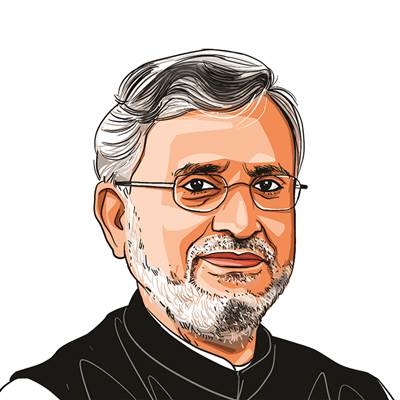Opinion Budget 2024: It reflects political confidence to address challenges
BJP government kept India’s long-term benefits at the heart of the budget and has not been swayed by short-term electoral gains
 The journey from this state of gloom and economic stasis to the only “bright spot” in the world can without a doubt be attributed to Prime Minister Narendra Modi and his team. (File/Representative Photo)
The journey from this state of gloom and economic stasis to the only “bright spot” in the world can without a doubt be attributed to Prime Minister Narendra Modi and his team. (File/Representative Photo) More than a decade ago, the world of global high finance was agog with monikers and acronyms such as the Fragile Five and PIIGS. If the latter was about the massive debt crisis faced by some , the other comprised an eclectic mix of emerging market economies that had become too dependent on unreliable to finance their . Amongst these was India, then under the stewardship of a pioneering economist as prime minister and an intellectual finance minister.
The journey from this state of gloom and economic stasis to the only “bright spot” in the world can without a doubt be attributed to Prime Minister Narendra Modi and his team. As we head into the general elections in the next few months, the handling of the economy is the brightest star in the PM’s report card. This economic context and political confidence reflected in the interim budget.
Against the expectations of a populist budget, the government stayed true to its mission of keeping India’s long-term benefits at the heart and has not been swayed by short-term electoral gains that are often achieved with giveaways. It has strengthened the foundations on which the path to Viksit Bharat will rest.
The last 10 years have seen structural changes necessary to achieve sustainable economic growth. Among them is the focus on creating infrastructure — hard, social and digital. This has continued in the latest budget. The expenditure on infrastructure is proposed to be enhanced by another 11.11 per cent resulting in Rs 11.11 lakh crore,a tripling of the outlay in the last four years.
This time the emphasis is on railways. Economic railway corridors for port connectivity, high traffic density and energy, minerals and cement will improve logistics, reduce costs and improve passenger train operations. Upgrading of as many as 40,000 regular rail bogies to Vande Bharat standards will enhance passenger safety and convenience. There are provisions for buying new engines, laying new tracks and doubling existing ones.
To support the states in their capital expenditure, the scheme of 50-year interest-free loans to states will continue and it will have an outlay of Rs 1.3 lakh crore. Another Rs 75,000 crore, as a 50-year interest-free loan, has been proposed to support milestone-linked reforms by state governments.
The plan to enable rooftop solarisation of 1 crore households will further India’s sustainability goals and offer common Indians free electricity up to 300 units. This is without being fiscally profligate. Additionally, excess solar power generated can be sold back to the grid leading to monetary gains. This is estimated to lead to savings of Rs 15,000 to Rs 18,000 per annum for every household.
While India has made remarkable strides under the Make in India programme and manufacturing activity has significantly grown in the last few years, to sustain it, India needs to build a robust innovation and research ecosystem. As a follow-up to the Anusandhan National Research Foundation Act, 2023, the government has announced a corpus of Rs 1.5 lakh crore with a 50-year interest-free loan. The corpus will provide long-term financing or refinancing to encourage the private sector to scale up research and innovation significantly in sunrise domains.
The government’s focus on women has been further extended. Now ASHA workers, Anganwadi workers and helpers, numbering about 35 lakh, will benefit from healthcare coverage under the Ayushman Bharat scheme. A campaign to cover young girls with the cervical cancer vaccine will be an important preventive healthcare measure. Self Help Groups (SHGs) run by women are transforming our rural socio-economic landscape with empowerment and self-reliance. While nearly one crore women have become Lakhpati Didis, the government plans to enhance its target to make three crore Lakhpati Didis.
The government’s “housing for all” programme addresses the needs of the poor in a big way. Under the rural programme, an additional two crore houses will be built in the next five years. It now plans to launch a scheme to help deserving sections of the middle class “living in rented houses, or slums, or chawls and unauthorised colonies” to buy or build their own houses.
While the government has not introduced any new taxes it has, in line with its vision to improve ease of living and improve taxpayer services, decided to withdraw outstanding direct tax demands up to Rs 25,000 for the period up to the financial year 2009-10 and up to Rs 10,000 for financial years 2010-11 to 2014-15. This is expected to benefit about a crore tax-payers.
The challenges of over a decade ago are now a distant nightmare — this has been possible only because of a sustained focus on the development of the country while keeping in mind every marginalised section of the society. As the PM often says, the country’s progress coincides with the progress of the poor, women, youth and farmers.
Now is the time to pursue the goal of Viksit Bharat with all the vigour at the command of the nation.
The writer is Rajya Sabha MP and former deputy chief minister of Bihar





